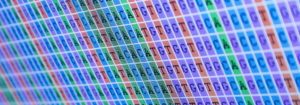Original Release Date: June 25, 2021 In episode four of our 2021 NIJ R&D and Beyond mini season, Just Science sat down with Tracey Johnson, a physical scientist and program manager in the Office of Investigative and Forensic Sciences at NIJ, to…
Category: Familial DNA & Kinship Analysis (page 2)
Just the Grim Sleeper Serial Killer
Original Release Date: December 4, 2020 In episode five of the 2020 Case Studies season, Just Science sat down with Rockne Harmon, forensic consultant and former senior deputy district attorney for Alameda County in California, to talk about familial DNA…
Effects of DNA Extraction Methods on Recovery, Degradation, and Loss
This webinar originally occurred on August 20, 2020 Duration: 1 hour Overview DNA recovered from forensic and ancient DNA (aDNA) sources is generally expected to be in low copy number and degraded in strand length. However, considering the following equation,…
Just Forensic Genetic Genealogy and GEDmatch: Verogen’s Approach
Original Release Date: September 25, 2020 In this Forensic Science Week special episode, Just Science interviews Brett Williams, the CEO of Verogen, about the GEDmatch database, how it can be used by law enforcement to perform forensic genealogy searches for investigative leads, and…
ASCLD Train the Director – Investigative Genetic Genealogy: Background and Crime Lab Strategy
← Back to Series This webinar originally occurred on January 23, 2020 Duration: 1.5 hours Overview Investigative Genetic Genealogy is a recently developed technique that generates new leads on previously unsolved cases where DNA from the suspect is present at…
MPS Workflow Through Simulation Tool
Overview At the International Symposium on Human Identification (ISHI) in Minneapolis, MN on September 26, 2016, the NIJ’s Forensic Technology Center of Excellence (FTCOE) presented at a workshop that provided attendees with a unique opportunity to learn best practices to…
Just Investigative Genetic Genealogy
← Back to Just Science Podcast Original Release Date: October 10, 2019 In episode four of our 2019 DNA season, Just Science interviews Dr. Barbara Rae-Venter, genetic genealogist and volunteer search angel with DNAadoption.org, about investigative genetic genealogy and its use in…
Just Genetic Marker Linkages
← Back to Just Science Podcast Original Release Date: September 10, 2018 In episode six of our 2018 NIJ R&D Season, Just Science speaks with Dr. Michael Edge of UC Davis about his research with record linkage of CODIS profiles…
Success Story: Maximizing the Use of Mitochondrial DNA in Identifying Remains and Aiding Missing Persons Casework
National Institute of Justice and the American Registry of Pathology Date April 2018 Overview Mitochondrial DNA (mtDNA) serves as an important tool in situations where traditional nuclear DNA analysis is unlikely to yield probative information. mtDNA sequencing has traditionally focused…
Familial DNA: A series of reports released by the National Institute of Justice [2017]
Overview The National Institute of Justice (NIJ) published several reports related to Familial DNA in August 2017. The topics of these reports include Studies of Familial DNA Searching Policies and Practices-Case Studies, Studies of Familial DNA Searching Policies and Practices -…





